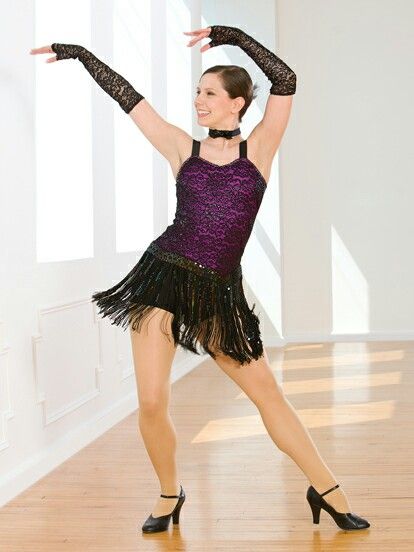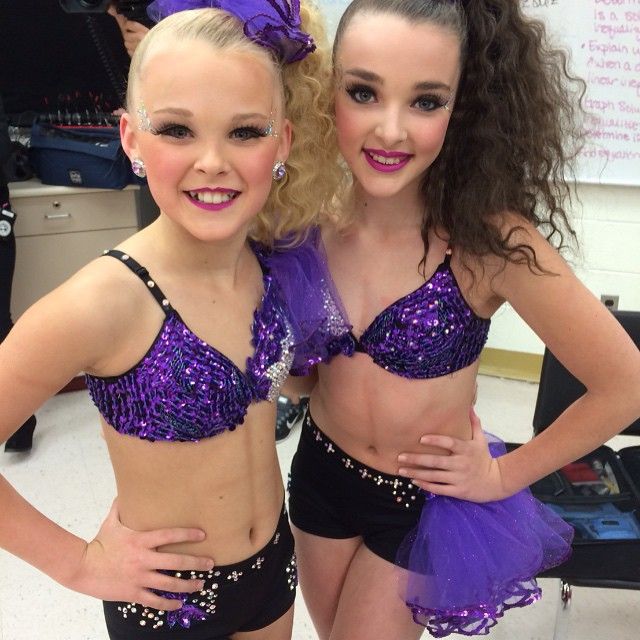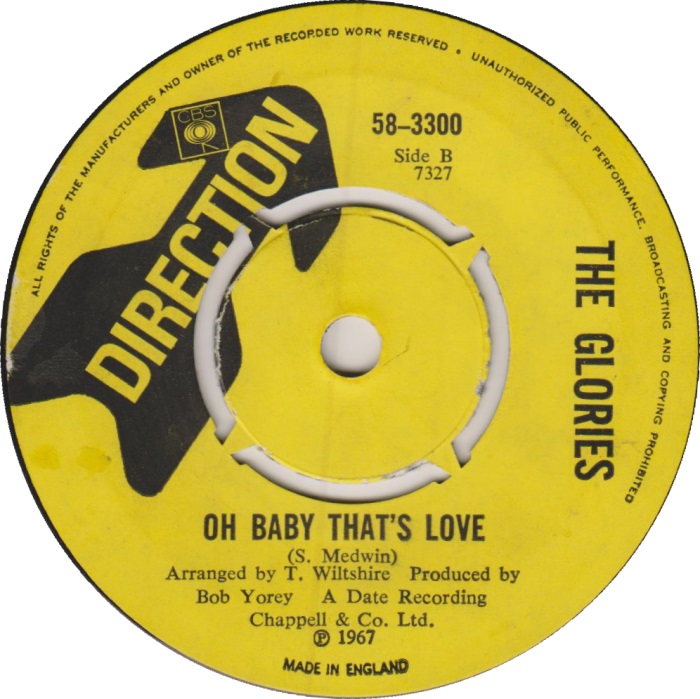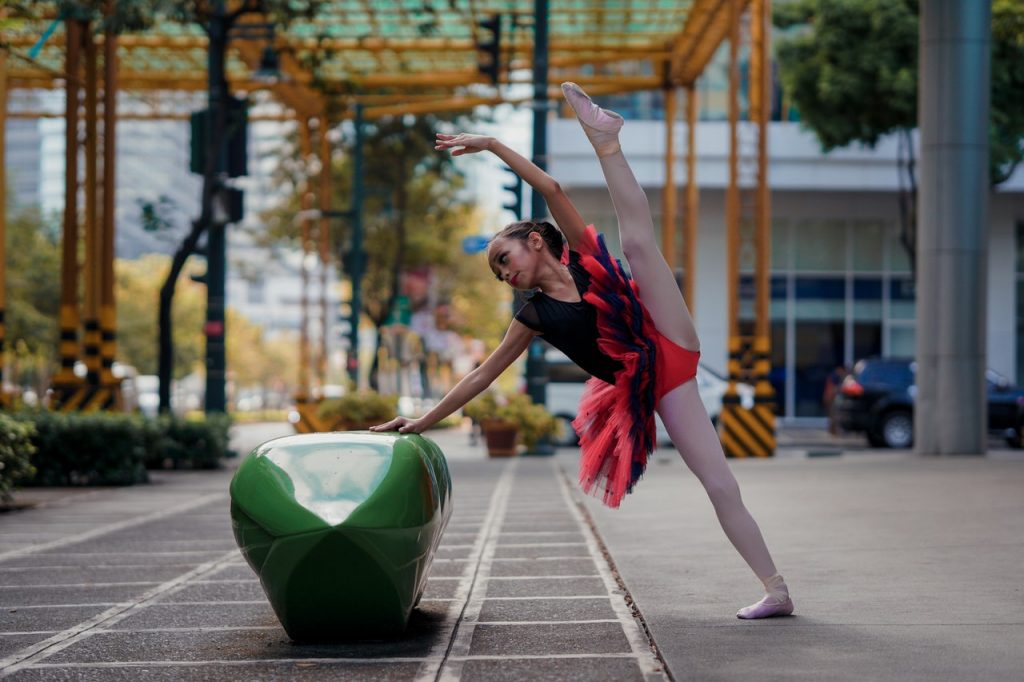How to dance northern soul style
How to dance to northern soul | Life and style
Like any good student, I am telling my teacher how I think something should be done differently. “How about,” I say to my northern soul dance instructor, Sharon Sullivan, “I miss out the tricky shuffle part of this dance step you’re trying to show me and just slide my foot along the floor instead – it’s basically the same thing, right?”
“No,” cries Sharon in horror. “That’s dad dancing! And if I catch you dad dancing on a northern soul dancefloor, I’ll track you down and slap you!”
She’s joking (I think). But she’s also got a point: dancing to northern soul music may be a joyful, cathartic experience, but doing it properly is a serious business. Patience, practice and – initially at least – heaps of concentration are behind the effortless spins and elegant footwork you see at northern soul all-nighters across the country. it simply won’t do to just turn up drunk and jump about.
To understand the dancing you have to understand the music. The northern soul scene blossomed in the 1970s, when DJs would hunt down rare black American soul 45s and bring them back to play in venues across the north-west of England. The music – inspired heavily by the Motown sound, with fast tempos and a simple 4-4 beat – was a dancer’s dream.
Because the scene embraced competitiveness, with DJs trying to outdo each other by playing the rarest vinyl, so too the dancefloor became a showcase for audacious moves: spins, backdrops, high kicks.
Mastering even the most simple steps is no mean feat: there are no formal rules, but the general gist involves gliding across the floor – sliding one foot and swiveling the other – while maintaining good posture and looking straight ahead.
Sharon was a regular on the original scene, but it was only eight years ago that she realised this naturally evolved dance could be broken down into component parts and taught, like any other. She spends three hours with me and Helen Jane, my wife, guiding us through a couple of simple steps: first we learn to position our feet; next we slide along the floor instead of stepping; finally we progress to swivelling one foot as the other one slides.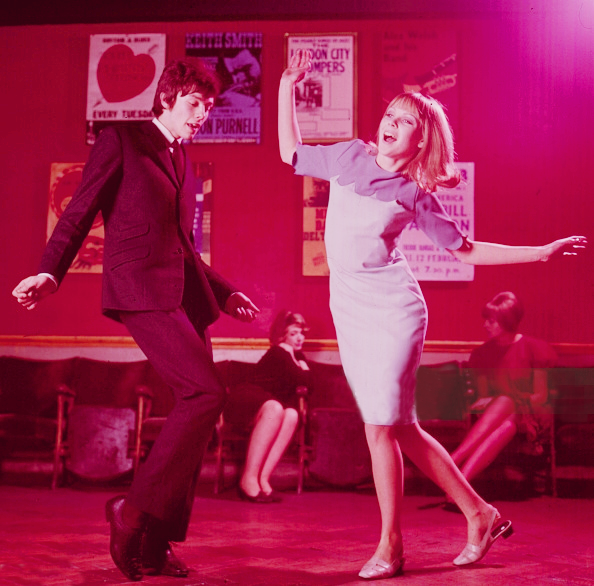
Certain elements, such as shifting your weight from leg to the other, or quickly taking two steps in the space of a single beat – feel unnatural at first, but Sharon explains that only when these foundations are committed to memory can you transfer your mental energy to expressing yourself on the dancefloor. “The most important thing is, it has to be fun,” she says. Having fun, it seems, takes serious practice.
I’m thrilled by how much we pick up in one lesson. Sharon is a fantastic teacher and by the time we leave, we can (with a bit of concentration, admittedly) perform the two basic steps she’s taught us and also have a few tricks – handclaps, a small spin – up our sleeves to mix things up.
Allow Instagram content?
This article includes content provided by Instagram. We ask for your permission before anything is loaded, as they may be using cookies and other technologies. To view this content, click 'Allow and continue'.
The next night, I don some suitably authentic baggy trousers and we head for the Sheffield City Hall soul night. It should feel daunting – there are enough dancers from the original scene there to remind us where we stand in the pecking order. Yet, being surrounded by fellow northern soul fans on a proper dancefloor is liberating. Towards the end of the night – both of us drenched in sweat – I find myself switching between the two step patterns we learned without realising I’m doing it, leaving me free to lose myself to the music. I even throw in a few 360 spins and – improbably – a high kick.
It should feel daunting – there are enough dancers from the original scene there to remind us where we stand in the pecking order. Yet, being surrounded by fellow northern soul fans on a proper dancefloor is liberating. Towards the end of the night – both of us drenched in sweat – I find myself switching between the two step patterns we learned without realising I’m doing it, leaving me free to lose myself to the music. I even throw in a few 360 spins and – improbably – a high kick.
Whether we eventually master backdrops and splits, or just remain gliding along in ecstasy to the music, I know one thing is certain: I won’t dad dance again.
Tim stayed at Jurys Inn, Sheffield
For information on northern soul dance lessons with Sharon, or to buy her DVDs, visit northernsouldance.co.uk
Three of the best soul nightsKing George’s Hall, Blackburn
Celebrating Wigan Casino’s 41st anniversary – 27 September
Rolls Royce, Derby
Probably the UK’s best-attended monthly soul night – 3 October
Kings Hall, Stoke
The country’s main gathering since 1996 – 4 October
For more information on northern soul nights around the country, visit goldsoul.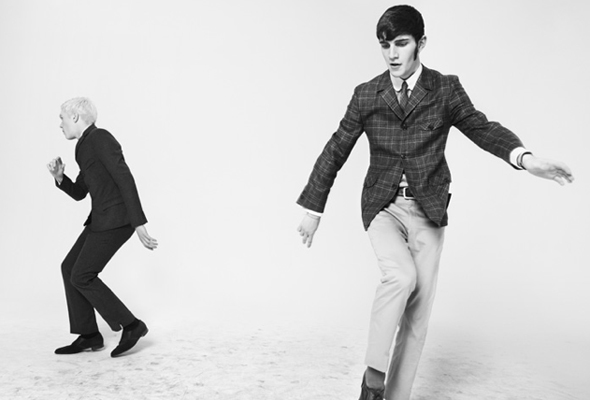 co.uk
co.uk
1. The backdrop
Drop backwards to the floor on to one or both hands – come back up quickly on the beat.
Illustration: Gary Calton2. The spin
Make this move your own: pull your arms in or raise them high; spin slow or as fast as you can.
Illustration: Gary Calton3. The kick
Think martial arts style – keep your balance, but if you topple, turn it into a new move.
Illustration: Gary Calton4. Shuffle
Move your feet quickly back and forth while heading forwards or backwards.
Illustration: Gary Calton This article contains affiliate links, which means we may earn a small commission if a reader clicks through and makes a purchase. All our journalism is independent and is in no way influenced by any advertiser or commercial initiative. By clicking on an affiliate link, you accept that third-party cookies will be set. More information.
More information.
HOME | Northern Soul Dance
Welcome to Northern Soul Dance. Established since 2008, we’re a dance company with a big heart and a well-rooted passion for the Northern Soul scene. So, are you ready to discover your soul?
Birthed from the all-nighters back in the 70s, Northern Soul dancing predominantly features gliding and shuffling across the dancefloor, letting the music take control and losing yourself in the moment. Famous clubs such as The Wigan Casino and The Twisted Wheel saw millions of fans take strides through their doors to spend the night twisting away to their favourite Northern Soul tracks. With a thriving scene still going strong today, it's the perfect time to experience the incredible feeling of being 'Out On The Floor'.
The power of dance has been harnessed for thousands of years, generations young and old can enjoy the movement whether it’s wandering through the waltz in the arms of your childhood sweetheart to getting down in the groove with your best friends, dance is everywhere.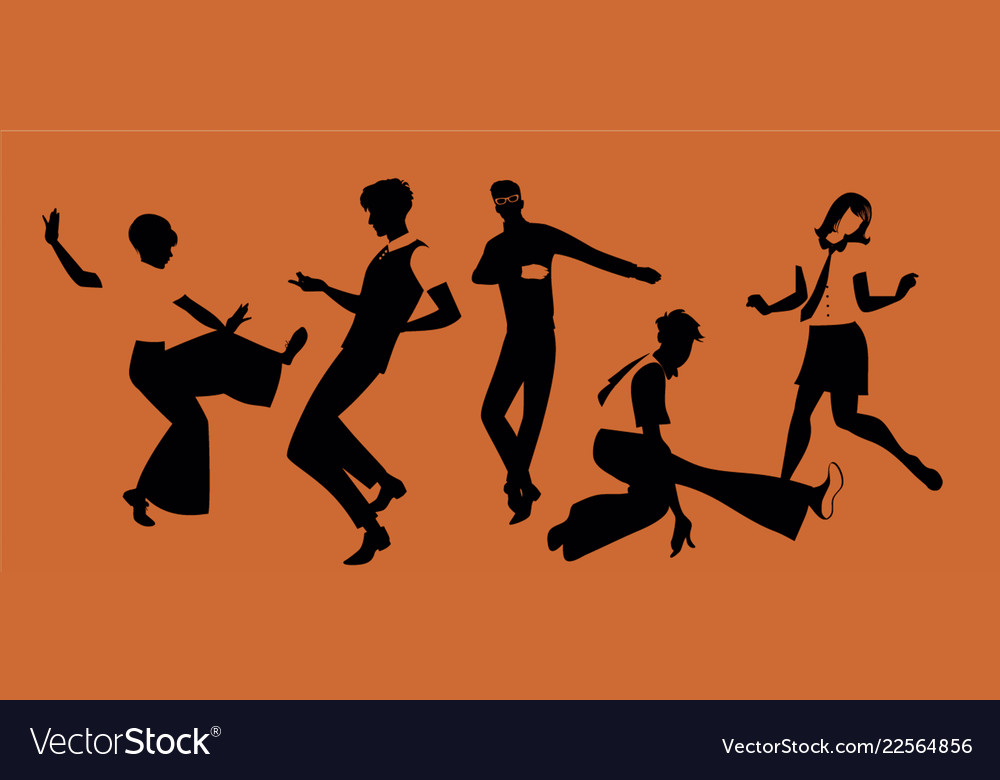 The dance is within you.
The dance is within you.
Whether you enjoy dance as a social activity, are just getting started as a new hobby or you’re a fully-fledged professional, there’s always more moves to learn and enjoy.
Play Video
Tumblr
Copy Link
Link Copied
FITNESS & HEALTH
IMPROVED WELLBEING
CREATIVE
EXPRESSION
So, what is Northern Soul dancing? First and foremost, it is a personal creative expression. A way for the dancer to engage with the music, make it their own and let the world around them melt away. Over the course of a night on the dancefloor, styled moves such as high kicks, spins and knee-bending backdrops are all thrown into the mix leaving dancers competing for the best combinations all-night long.
Here at Northern Soul Dance we want to give you the tools to dance the night away. It’s a genre of dance that’s joyous, cathartic and loved by so many people. Whether you are a beginner and new to the Northern Soul scene or a professional dancer wanting to expand their dance portfolio, we’re able to teach at all levels.
We have a range of services that we can provide – Classes, workshops, private tuition, video tutorials, DVD box-sets and problem-fixing personal coaching. Check out the ‘Get Dancing’ section to find out more! You can also subscribe to our YouTube channel to find interviews, tips and techniques etc click the icon below.
SHAROn l d SULLIVAN
BSc(Hons) PsychOLOGY
MSc(Hons) NutrITION
Fellow UKAPTD
Sharon’s passion for the Northern Soul scene blossomed from the young age of 15 and with her already well-rooted devotion to dancing, Sharon continued to develop her life-long dancing career obtaining professional certificates in different dance styles including freestyle dance, hip-hop, street dancing as well as representing England and Scotland in major championships becoming a British Finalist four times.
A club night back in 2008 saw the very humble beginnings of Northern Soul Dance. A track hits the dancefloor, Sharon makes the moves, an intrigued friend asks, “Can you teach me to do that?” and the rest is now history. After years of development, Sharon has curated the Northern Soul Dance company to be able to bring the core movements and ideals to the ever-growing Northern Soul family, either as part of a workshop or for you to try out in the comfort of your own home.
A professional dance coach, adjudicator and choreographer, Sharon has been a professional dance teacher for over 25 years. As a member of the British Dance Council, International Dance Council and is a Fellow of United Kingdom Alliance Professional Teachers of Dance (UKAPTD), Sharon has also studied City & Guilds Fashion and Design, BSc (Hons) Psychology and MSc (Hons) Nutrition.
Sharon is also a qualified teacher trainer. She currently has two students who are training very hard to become professional dance teachers.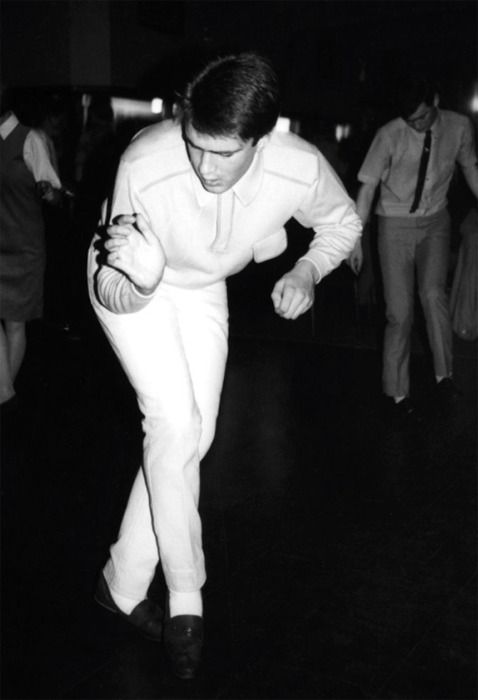
KENNY JAMES
Dancing competitively since the young age of only eight years old, Kenny has won many national and international dance championships over the years. He finished sixth in the world, aged 11 and winner, aged 12 of the North of England Championship against hundreds of competitors. Having been a dancer for over 30 years, Kenny has taught all ages including children wanting to compete nationally and internationally. Tutoring some of the best dance troupes in the UK, many of them have gone on to become teachers themselves.
Kenny has been a passionate advocate of the Northern Soul scene for decades. Regularly touring the UK since 2009, Kenny is able to deliver the moves for a variety of dance styles including Northern Soul dancing. Kenny also provides Northern Soul Wedding Dance tuition and has even had the privilege of teaching many celebrity couples their special first dance for their big wedding day. As well as a passion for the scene, he’s also a Drum & Bass DJ, mixing his own unique style with tones of the Northern Soul and Motown genres.
"Northern Soul" dir. Elayne Constantine ("New British Cinema"): _arlekin_ — LiveJournal
?- Production
- Movies
- Music
- Cancel
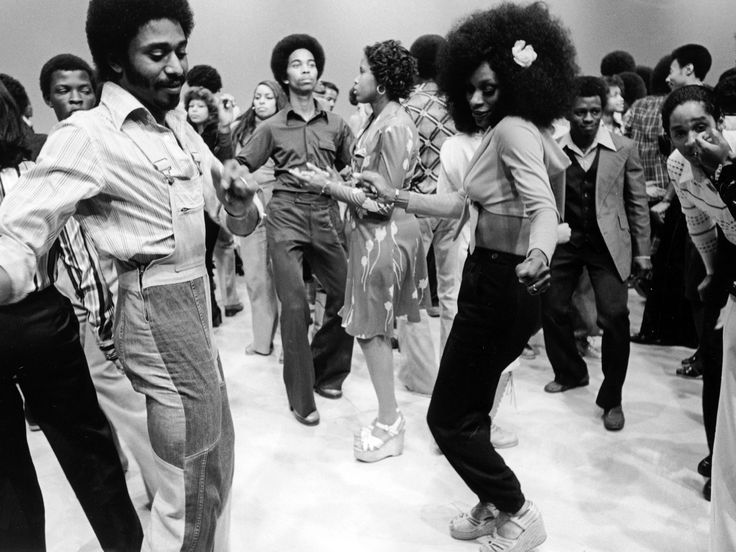 America is far away, and at the enterprise the guys get acquainted with an older comrade, also a fan of soul, at the same time with a drug dealer, and, as usual, they get hooked on drugs with pleasure. The blond is also injecting, besides, he behaves too cheekily at the DJ console - a more "correct" brunette, who opens up prospects thanks to the trust of the owner of a rather respectable institution by local standards, substitutes with his escapades, and even his older comrade, with his boasting, directs him the police. Soul, therefore, with a smell - but at least it's just drugs, and not the Russian spirit, coupled with Orthodox spirituality, you can live, that is, you can. And although the blonde has a brother in prison, and an older comrade with friends die ridiculously one after another, for some reason it is necessary to consider the denouement of this tragedy in the soul style as a happy ending. To be imbued with the spirit of soul - I, frankly, failed, and the main characters did not seem charming to me at all, neither of the two.
America is far away, and at the enterprise the guys get acquainted with an older comrade, also a fan of soul, at the same time with a drug dealer, and, as usual, they get hooked on drugs with pleasure. The blond is also injecting, besides, he behaves too cheekily at the DJ console - a more "correct" brunette, who opens up prospects thanks to the trust of the owner of a rather respectable institution by local standards, substitutes with his escapades, and even his older comrade, with his boasting, directs him the police. Soul, therefore, with a smell - but at least it's just drugs, and not the Russian spirit, coupled with Orthodox spirituality, you can live, that is, you can. And although the blonde has a brother in prison, and an older comrade with friends die ridiculously one after another, for some reason it is necessary to consider the denouement of this tragedy in the soul style as a happy ending. To be imbued with the spirit of soul - I, frankly, failed, and the main characters did not seem charming to me at all, neither of the two.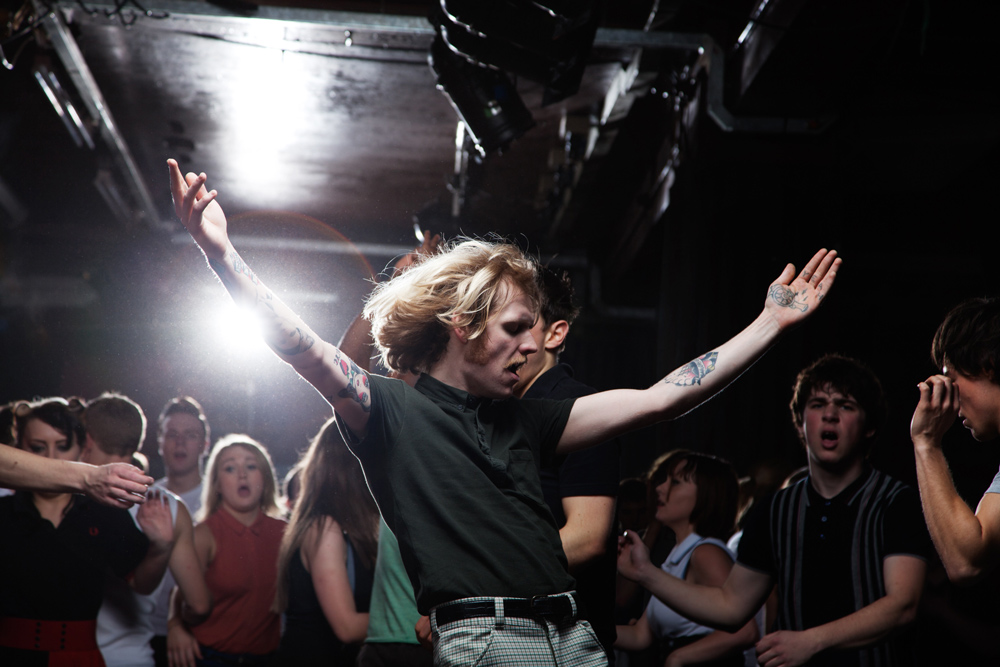 Assholes and assholes - they buy and put on records, act out scenes from Bruce Lee films, doggie, put up, eat pills until they lose (literally) consciousness. I myself once, forgetting myself, could dance in "Metelitsa" to "Hi-Fi" or "Guests from the Future" - but my memories (I'm biased, of course) are much brighter than what such a movie can offer. Yes, and our songs were more fun, where did everything go ... Having recently found myself in a karaoke club and succumbing to the general frenzy, after "And Lenin is so young" and "Young man, invite me to dance" I really wanted to remember my youth, asked me to play my favorite song by Roma Zhukov - so it was not in the club bins, they searched both by name and by individual lines - they did not find it. And such after all was a disco hit still it would seem quite recently. I recently said it to the computer and listen, but this is a completely different feeling. Especially the beginning of the second verse - what kind of poetry, and what kind of music!
Assholes and assholes - they buy and put on records, act out scenes from Bruce Lee films, doggie, put up, eat pills until they lose (literally) consciousness. I myself once, forgetting myself, could dance in "Metelitsa" to "Hi-Fi" or "Guests from the Future" - but my memories (I'm biased, of course) are much brighter than what such a movie can offer. Yes, and our songs were more fun, where did everything go ... Having recently found myself in a karaoke club and succumbing to the general frenzy, after "And Lenin is so young" and "Young man, invite me to dance" I really wanted to remember my youth, asked me to play my favorite song by Roma Zhukov - so it was not in the club bins, they searched both by name and by individual lines - they did not find it. And such after all was a disco hit still it would seem quite recently. I recently said it to the computer and listen, but this is a completely different feeling. Especially the beginning of the second verse - what kind of poetry, and what kind of music! This song without beginning,
this song without end
You did not notice me,
mistaking me for a youngster
I am the most cheerful today,
I don’t want to be bored
This dance is very fashionable
we will rock together
Come and do not be shy
and under fire music
Start up and light up,
just don't burn me
Don't listen to anyone -
nothing to be bored at home
Agree with me better
dance until dawn
We will have fun - we start dancing
The record is spinning, the record is spinning again
We will have fun, we will set a good pace
And there will be no more problems in the evening
I came to the disco
and saw you there
I, of course, wanted you to choose me
Amazing song ,
the whole hall turns on with it
What would happen - it is not known,
if the DJ gets bored . ..
..
We will have fun - we start dancing
The record is spinning, the record is spinning again
We will have fun, we set a good pace
And there won't be any more problems in the evening
Subscribe
-
a little blood was released for a man: "Slava" by V. Gusev, BDT, dir. Konstantin Bogomolov
- Here you have brought the wreckage of me. Death is silent over my bed, And without joy you, without fire In a silent battle you meet with her?… Lev Dodin
As never before, the memories of my only experience of theatrical practice - an amateur production of Chekhov's "The Seagull" came in handy ...
-
God loves little children: "Lord of the Flies" by W. Golding, MDT, dir. Lev Dodin
My current St. Petersburg "creative trip" to MDT began and ended with performances by Lev Dodin. Already the second edition ...
Photo
hint http://pics.livejournal.com/igrick/pic/000r1edq
Nord Soul
Part IIas a DJ changed the music of
after today.
 0087
0087 For me, northern soul was the eighth wonder of the world. If you look at the crisis-stricken north of England, there is almost nothing there but steel mills and coal mines. The local inhabitants spent the whole week engaged in boring monotonous work, and hard work. But on weekends they wanted to have fun for real. Just sitting until eleven in the evening in a local pub and going to sleep - such a prospect clearly did not appeal to them. When the rave movement took off like a rocket, it was reminiscent of the days of northern soul twenty years ago. Again people dancing until they pass out to fast music, and the same atmosphere of love. House is the northern soul of the current generation. And as far as northern soul is concerned, it was so revolutionary because it had no precedent.
Ian Dewhirst aka "Frank" Northern Soul DJ
Northern soul is a fascinating example of a predominantly proletarian, drug-fuelled youth culture that (unlike house) has never been controlled by the music industry because the latter just didn't understand. Northern soul was a real and almost perfect underground phenomenon.
Northern soul was a real and almost perfect underground phenomenon.
John McCready in The Face magazine
Imagine you live in a remote town somewhere in the north of England. Endless rows of factories cover the horizon with chimneys belching dark gray smoke. Five days a week from 9until 5 p.m. you work hard at one of these factories: you stand at the conveyor, sweep the yard, shovel out the garbage. It is a thankless job, but it brings a livelihood. Although more importantly, he brings funds for dancing.
For although the factory is your job, it is certainly not your whole life. Every weekend you travel to other upstate northern cities, dressing up, popping pills and dancing to fast obscure soul records, daydreaming about singers from impossibly posh places like Detroit, Chicago or Philadelphia.
Your equipment is not fashionable, but very practical. From a white Fred Perry T-shirt to leather-soled Ravel shoes, everything you wear is made for comfort and speed. The drugs that you take are also practical: you swallow mountains of amphetamines in order to last on the dance floor until the morning.
The drugs that you take are also practical: you swallow mountains of amphetamines in order to last on the dance floor until the morning.
You dance to unknown artists' records from labels that no one has ever heard of, and they sing songs that few people know. However, it is precisely such records that you value as treasures, and spend tens or even hundreds of pounds on them from your modest salary.
Your friends, still on progressive rock, or perhaps discovering the brilliant popular forms of glam rock and listening to David Bowie, are laughing at you. They do not have access to your secret world. They don't understand your clothes, or your music, or the rituals of your underground existence. After all, you are a member of a closed order and belong to the most honest and unsullied of musical movements - northern soul.
THE FIRST RAVE CULTURE
A full fifteen years before the birth of rave culture, northern soul prepared an almost complete development program for it.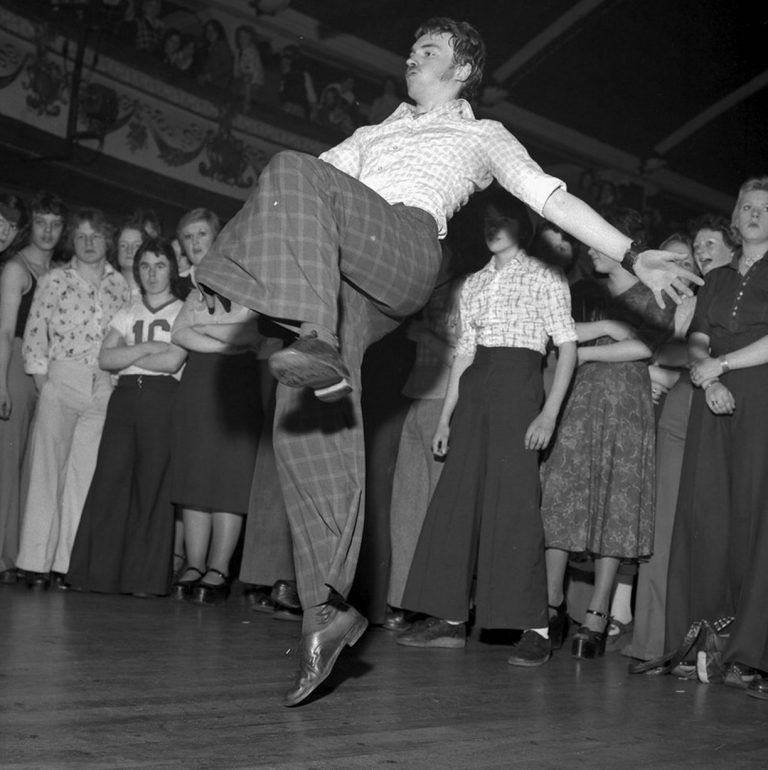 There were hangouts, taking place in obscure places where, sometimes from afar, crowds of working-class kids came to hang out and dance to music that no one else cared about. In this environment, spiritual unity and cohesion were valued above all else. Music journalist snobs and London clubbers have long ignored or treated this culture with contempt, allowing it to develop in isolation and serenity. Like the rave movement (whose core split from the rest of the more conformist movement in order to preserve the original spirit of the music), northern soul eventually experienced a deep split when traditionalists strongly opposed the open-minded music politics of progressive DJs.
There were hangouts, taking place in obscure places where, sometimes from afar, crowds of working-class kids came to hang out and dance to music that no one else cared about. In this environment, spiritual unity and cohesion were valued above all else. Music journalist snobs and London clubbers have long ignored or treated this culture with contempt, allowing it to develop in isolation and serenity. Like the rave movement (whose core split from the rest of the more conformist movement in order to preserve the original spirit of the music), northern soul eventually experienced a deep split when traditionalists strongly opposed the open-minded music politics of progressive DJs.
Northern soul has been dismissed by many as a dead end branch, when in fact it was a vital step in the creation of today's club culture and in the evolution of the DJ. Many of the first club records to hit the UK pop charts were genetically northern soul. The DJs who played it brought many stylistic innovations to the craft, and it is no coincidence that the first ones who had the foresight and courage to start playing house in the UK came from the northern soul environment. In fact, before disco arrived in New York, British DJ culture was far ahead of America's, thanks to northern soul and clubs like the Catacombs and Twisted Wheel.
In fact, before disco arrived in New York, British DJ culture was far ahead of America's, thanks to northern soul and clubs like the Catacombs and Twisted Wheel.
Northern soul gave the DJ an obsession. Since musical rarities were especially honored in his environment, he made him an avid collector of vinyl. He let him know how important it is to put on records that no one else has, and spend months, years and hundreds of pounds in search of that unknown song that would bring the audience to its knees. He forced the DJ to cross the oceans to find in some dusty warehouse or in a tiny country house an obscure classic record that competitors could not have. Northern soul taught a DJ how to turn vinyl into gold dust.
GENRE BUILT FROM FAIL
Northern soul could be said to have been made by hundreds of singers and bands that copied the Detroit sound of Motown pop. rhythm and blues, soul, etc. The name comes from the Motown company, in whose studios many Negro performers recorded. Characteristic features - complex orchestral arrangements, accurate bright sound of all instruments and voice, virtuoso singing based on Negro vocal triads) of the sixties years. Most of it was a series of fiascos in its time: it was the music of failed artists, penny labels and small towns, lost somewhere in the mechanisms of the American entertainment machine. However, in northern England it was resurrected and extolled from the late sixties until its full bloom in the mid-seventies.
Characteristic features - complex orchestral arrangements, accurate bright sound of all instruments and voice, virtuoso singing based on Negro vocal triads) of the sixties years. Most of it was a series of fiascos in its time: it was the music of failed artists, penny labels and small towns, lost somewhere in the mechanisms of the American entertainment machine. However, in northern England it was resurrected and extolled from the late sixties until its full bloom in the mid-seventies.
The genre got its name from the place where it was enjoyed, not from where it originated (although that would also make sense). The word "northern" refers not to Detroit, but to Wigan, not to Chicago, but to Manchester, Blackpool and Kpit-horps.
Founding a genre on a love of music long forgotten by the rest of the world is a bit like inviting friends over and talking to them in Latin, but that's exactly what happened in the clubs scattered across the industrial north of Britain. It's possible that the youth here's addiction to drugs called for a certain type of music, or that this fast-paced escapist style, born in the motor city of Detroit, suited their mechanistic existence.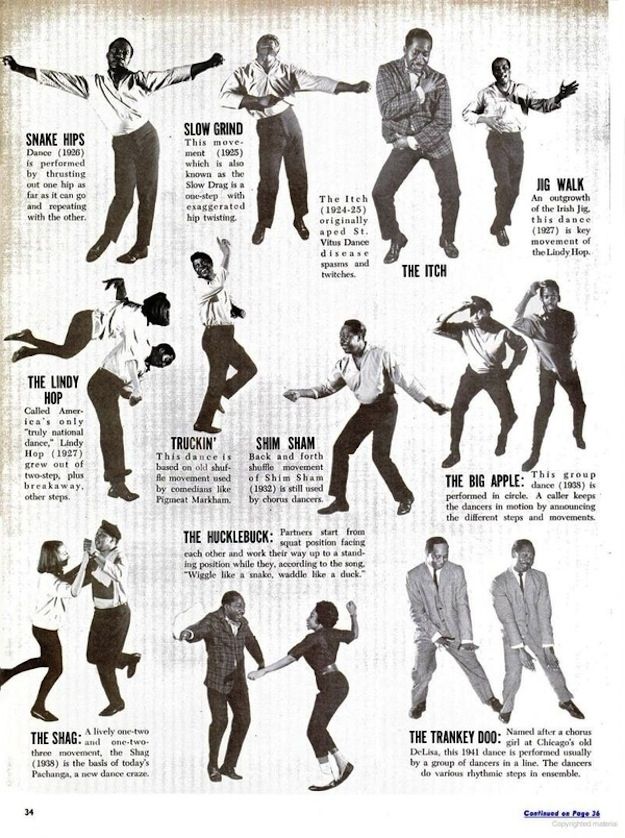 Or maybe they just didn’t want to watch the death of their favorite genre, which bothered the rest. Somehow, the working-class (almost all-white) youth of northern England began to run around with records that initially failed miserably. The cult of such tunes grew into a flourishing underground movement.
Or maybe they just didn’t want to watch the death of their favorite genre, which bothered the rest. Somehow, the working-class (almost all-white) youth of northern England began to run around with records that initially failed miserably. The cult of such tunes grew into a flourishing underground movement.
For many years this movement remained very pure due to its independence. Northern soul, as exclusively club music, did not need either approval or crossover hits (Crossover (“crossing”)
is a synthesis of different musical styles). And because of his retro orientation, there was no need for new bands or bright young stars. Frankly, since all the records used were many years old, he did not require anything from the music industry at all.
What he needed was an army of dedicated enthusiastic collectors willing to dig up enough good records to keep the movement going. Without the "new" records to be found and played, it would quickly degenerate into something as dynamic as a nursing home.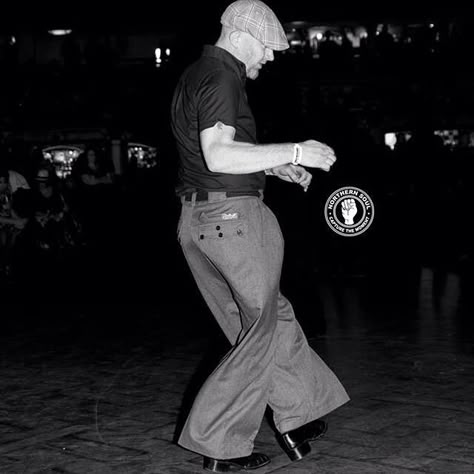 Fortunately, there were enough incentives for discoveries.
Fortunately, there were enough incentives for discoveries.
Northern soul was especially attractive to collectors, as it consisted almost entirely of rarities. The record was supposed to be not just good, but damn rare. If the track sounded like it was recorded in some Detroit garage, so much the better. (Especially since that was probably exactly what happened.) Adding to the temptation was the fact that the collection of northern soul could (at least in theory) become complete, since only songs of a certain type and period were suitable for it, so the number of coveted objects was strictly limited. . In a word, work with the tenacity of a maniac - and one day you will collect everything.
In addition, as a result of such vinyl fetishism, unknown records dramatically raised the prestige of their owner. In this closed world, the person who discovered a song like R. Dean Taylor's 'There's A Ghost In My House' or Gloria Jones' 'Tainted Love' could count on a sea of applause or even universal worship.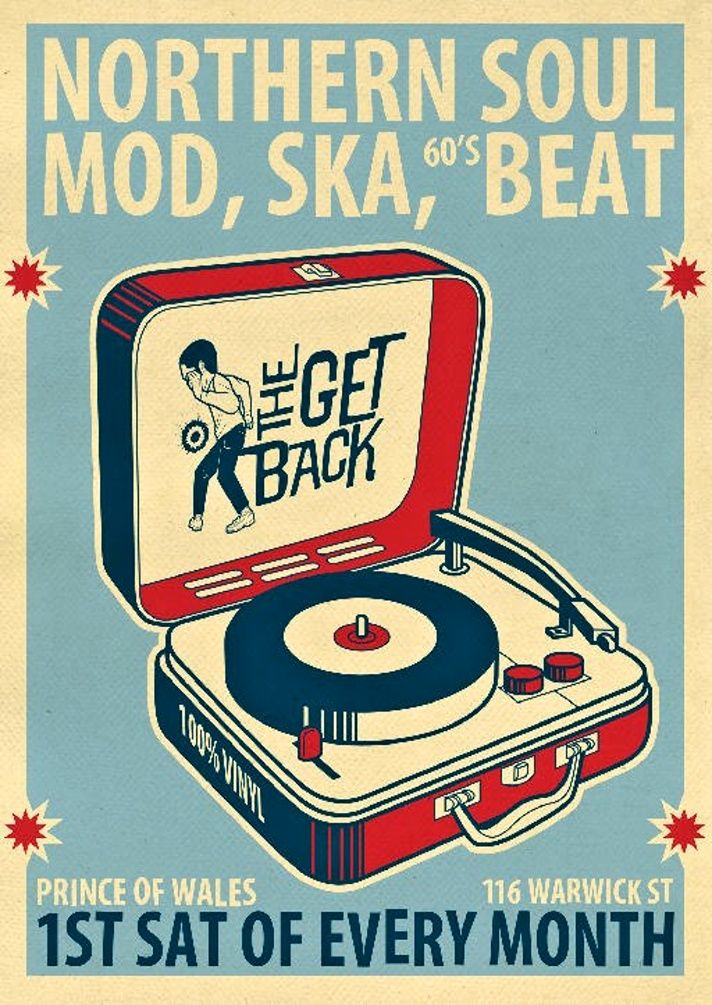 The audience of a DJ who had an exclusive melody quickly expanded, and his status grew by leaps and bounds. Accordingly, the cost of records also soared.
The audience of a DJ who had an exclusive melody quickly expanded, and his status grew by leaps and bounds. Accordingly, the cost of records also soared.
“Finding an unknown record is like seeing a child suddenly grown up,” reflects one of the main northern DJs, Ian Dewirst. “You listen to it at home and wonder if it will work. And then watch your dream become a reality. Once! - and your melody is the highlight of the program. Its value rises from zero to sky-high heights. Almost like the stock market."
In the clubs, the dancers fell into ecstasy from fresh treasures from America. The posters advertised not only the DJs, but also the rare records they were about to play. Given this unprecedented discophilia, the hunt for a rare sound has often proved comically heroic. Although the financial result usually turned out to be deplorable, there were many brave explorers who, with the last of their money, went to the New World with the confidence that they would return not with a box of long-forgotten and dusty seven-inch singles, but with a casket of priceless pearls.
TWISTED WHEEL AND THE ROOTS OF NORTHERN SOUL
When Eddie Holland, Lamont Dozier, and Brian Holland wrote a follow-up to the Four Tops bombshell 'Ask The Lonely' in 1965, they didn't one suspected how important it would become to a strange cult of soul-obsessed DJs in northern England. The song was called 'I Can't Help Myself (Sugar Pie Honey Bunch)'. In all its elements - from the initial salvo of drums, bass and piano to the dizzying ornament of strings, double snare drums and rhythmic vibraphone interspersed with Levi Strubbs' spiraling vocals - she became the standard of northern soul.
'I Can't Help Myself' had exactly the sound that Twisted Wheel loved. This spartan-looking basement near the center of Manchester was packed every Saturday with about six hundred people dancing to the rarest recordings in the country until half past seven in the morning.
The Twisted Wheel Nightclub opened in November 1963 at 26 Brazenows Street (it moved to 6 Whitworth Street on September 18, 1965).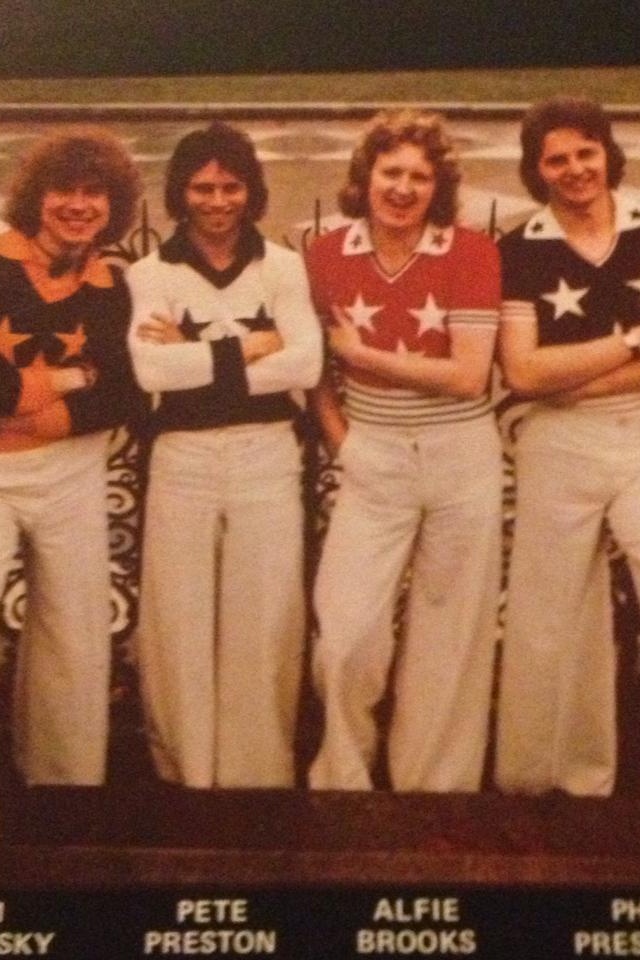 They played a mixture of blues, early soul, bluebeat and jazz. The fashion for night dance parties appeared a little earlier, but after a couple of years, when the outlines of the club environment changed significantly, the “Wheel” (the Wheel was the name of the Twisted Wheel nightclub.) became a rare oasis of this kind of music.
They played a mixture of blues, early soul, bluebeat and jazz. The fashion for night dance parties appeared a little earlier, but after a couple of years, when the outlines of the club environment changed significantly, the “Wheel” (the Wheel was the name of the Twisted Wheel nightclub.) became a rare oasis of this kind of music.
Underground rock has come to dominate London and the south. This trend did not affect the northern clubs in any way. Perhaps the reason was that the invariably proletarian north did not want to break with the escapism of nightly soul sessions. Or maybe this was due to the fact that then pop culture developed much more slowly than it does now. The connection between London and the rest of the country was undoubtedly less intense, with major music publications limited to rock and popular music topics. So the wheelers, blissfully unaware of their backwardness, continued to dance to the fast beats of their favorite soul records.
The songs played in the Twisted Wheel were not accidental in their fast tempo. The club's clients sat tightly on a variety of "speeds" (Speed - an amphetamine-type drug) - from "black bombers" and "scarlet hearts" to "prelly" and "dexy" (drinamyl, preludes and dexedrine), which were bought from dealers in the club or stolen from pharmacies. On the way to the soul club, party people often robbed pharmacists in order to get "food" for the evening.
The club's clients sat tightly on a variety of "speeds" (Speed - an amphetamine-type drug) - from "black bombers" and "scarlet hearts" to "prelly" and "dexy" (drinamyl, preludes and dexedrine), which were bought from dealers in the club or stolen from pharmacies. On the way to the soul club, party people often robbed pharmacists in order to get "food" for the evening.
“The bad guys must have been scouting all the way to Wigan, noticing the less well-guarded pharmacies,” says Ian Dewirst. “You could bet that they would certainly rob the drugstore.”
Refreshed with prescription-only amphetamines, they danced in a rather gymnastic fashion to songs of a strictly defined kind. The pace was the most important thing. To keep up with the whistling dancers (and thus make an impression on the Twisted Wheel), the record had to have enough energy: it required an unrelenting throbbing Motown rhythm, generously flavored with brass and strings and spiced with melodramatic black vocals.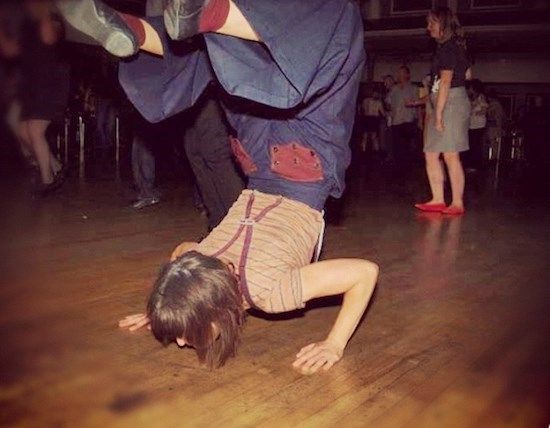 This music was not "funky", but it was definitely fast. The lyrics were not about sex, but about love. Sentimental melodies helped to get away from the monotonous factory reality.
This music was not "funky", but it was definitely fast. The lyrics were not about sex, but about love. Sentimental melodies helped to get away from the monotonous factory reality.
The Twisted Wheel was an unusually small establishment with five rooms and stone floors, recalls Dave Evison, who later turned discs at the Wigan Casino. There were bicycle wheels everywhere. Only four weeks later I realized where the DJ was: he hid behind a pile of scrap metal! Dancing, the guys jumped on the walls, competing in who could jump higher. Everything was very fresh and spicy. They respected the disc jockey and his choice. It was a nice place."
The mobility of the clubbers who visited it is striking. Soul zealots traveled many miles to get to the Twisted Wheel. If you think that before the rave-pohi no one left their hometowns for the sake of dancing, then you are mistaken: those guys did it not in 1989, but already in 1969.
“The road there was also a pleasure,” says Carl Woodroffe, who became one of the club's first DJs under the pseudonym Farmer Carl Dean.
